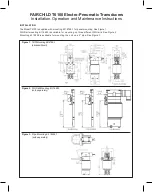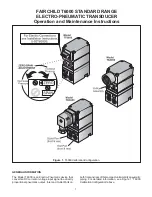
7700 MultiFrame Manual
7707IT Multi-Channel Intercom Fiber Transceiver
Revision 1.7
Page - 33
7.5.1.4. Audio Gain Settings
This parameter enables the user the set the
Audio Gain
. For matrix type intercom signals, the specified
range of gain adjustment is -10dBu to +10dBu, in 0.1dB increments. For party-line type intercom signals
the specified range of gain adjustment is -5dBu to +5dBu, in 0.1dB increments.
Matrix audio types use a balanced voltage output signal. The selected gain value describes voltage gain,
and is accurate for high impedance loads. Analog audio output design dictates that the amplitude will
reduce slightly as the load impedance is reduced. Subtract approximately 1dB for 600
Ω
loads.
Party-line audio types use an unbalanced current output signal. This current output signal produces a
voltage signal across an external termination which is normally 200
Ω
. The termination is shared by all
connected intercom devices, and usually resides within the power source of the system. The selected
gain value describes voltage gain, and is accurate for a 200
Ω
termination. Other termination values will
yield a different gain as per the current-resistance product of the signal.
7.5.2. Data Control
The
Data Control
settings, as illustrated in Figure 7-2, allow the user to enable or disable the
Data
Termination Status
and the
Data Fail Safe Bias Status
.
Please note that three channels will be available while using the 7707IT-3-F2 and eight
channels will be available while using the 7707IT-8-F2.
Figure 7-2: Data Control Tab
7.5.2.1. Data Termination Status
The 7707IT provides a selectable input termination of 110
Ω
for the balanced serial data signals. This
termination should be active as required by the specific application, and common practice. For the sake of
brevity, only
Data Termination 1
will be discussed in the manual.
Data Termination 1:
When set to “Active,” the 110
Ω
is on. When set to “Not Active,
the 110
Ω
is off and the input is high impedance.




































